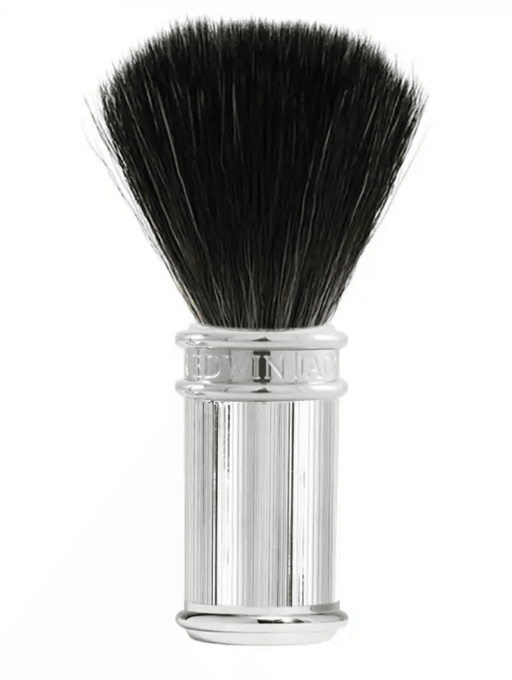FAQs
How Do You Choose The Right Shaving Brushes?
When deciding which shaving brush is right for you, It’s important to understand the types of shaving brushes:
- Boar Hair and Horsehair Brushes: If you prefer traditional shaving, consider boar hair or horsehair brushes. Boar hair brushes excel at creating a deep lather and gentle exfoliation. Horsehair brushes offer a softer feel and produce a thicker lather for added skin hydration.
- Badger Hair Brushes: For a luxurious shaving experience, opt for badger hair brushes. They provide softness and refinement, creating an airy foam for a closer, smoother shave. These brushes also have different grades such as silvertip, best badger, and pure badger.
- Synthetic Brushes: For an eco-conscious choice, synthetic brushes are ideal. They're cruelty-free, easy to maintain, and offer a comfortable shaving experience.
How do you use a shaving brush?
Using a shaving brush correctly enhances your shaving experience. First soak your brush in warm water (not hot) to soften the bristles. Add a small amount of product to your brush, then create a lather on your chosen area of skin.
Avoid using the brush in the shower under running hot water, as this can cause horsehair brushes to lose bristles and damage other types of bristles. When you're done shaving, rinse the brush thoroughly with warm water. Give it a quick shake and let it air dry.
How do you select a shaving brush?
Selecting the right shaving brush involves considering several factors to ensure you get the best experience and results from your shave. Here's a guide to help you choose:
Bristle Type: Choose from badger, boar or horse hair. Badger is soft and retains water well, boar is stiffer and more exfoliating, and horse hair is a balance between softness and stiffness. Synthetic brushes are cruelty-free, cost-effective, and low maintenance. They are durable, quick-drying, and provide a smooth lather without needing a break-in period.
Occasional Cleaning: Depending on use, consider giving your brush a deep clean with mild shampoo or brush cleaner every few weeks to remove built-up residue and oils.
How often should I replace my shaving brush?
You should replace your shaving brush every 5-10 years. However, how often you replace your shaving brush will depend on its quality, your personal usage, and how well you take care of it.
Signs It's Time to Replace Your Brush
You should consider replacing your shaving brush if you notice any of the following signs:
- Difficulty Lathering: If the brush struggles to build lather, it may be time for a replacement.
- Excessive Shedding: While some shedding is normal, frequent loss of bristles can indicate a problem.
- Loss of Firmness: Over time, the bristles can become too soft or lose their structure, affecting performance.
- Mildew or Odor: If the brush retains moisture and develops mildew or an unpleasant smell, it may be beyond saving.
Can I use a shaving brush with any shaving cream or soap?
Yes, shaving brushes, including synthetic shaving brushes, are compatible with almost any shaving cream or soap. Just make sure you're using enough water to create a thick lather.
Are there any special considerations for sensitive skin when using a shaving brush?
For sensitive skin, consider softer bristles like luxurious badger shaving brushes or synthetic shaving brushes. They are gentle on the skin and minimize the risk of irritation while applying lather smoothly over beard hair.




















































































